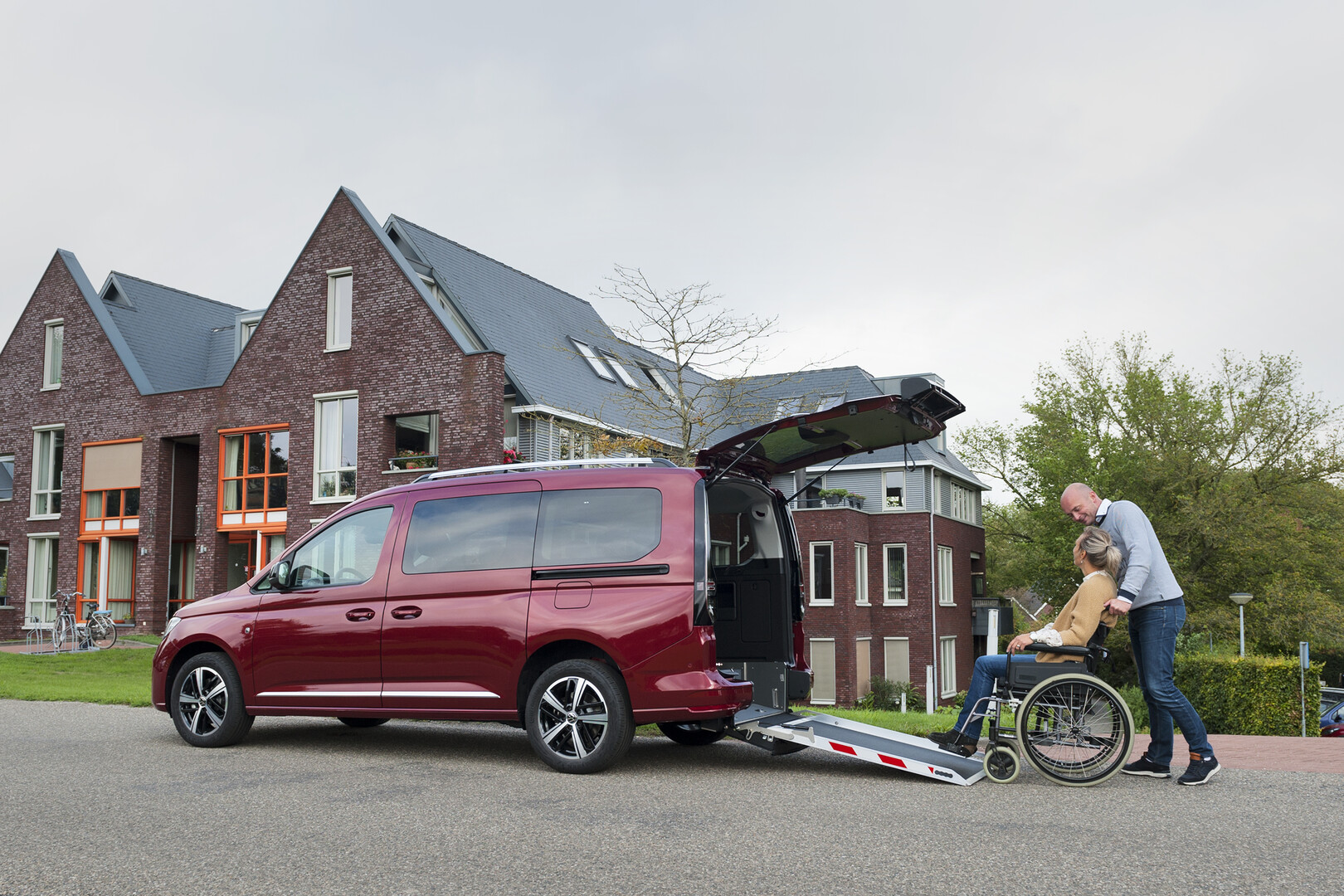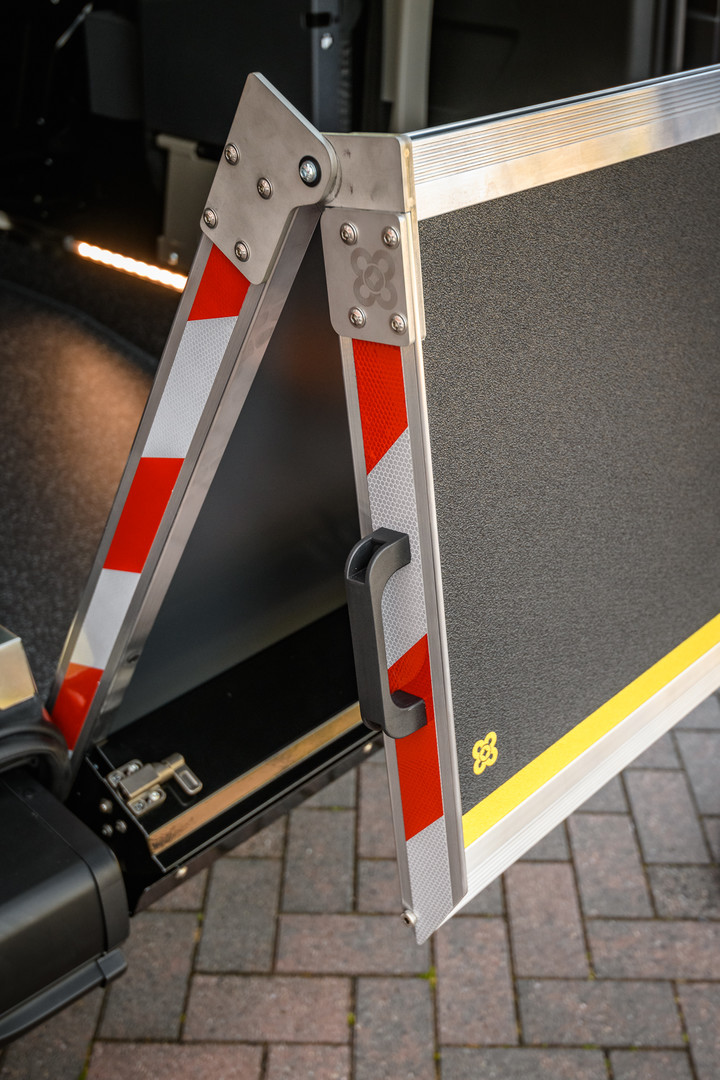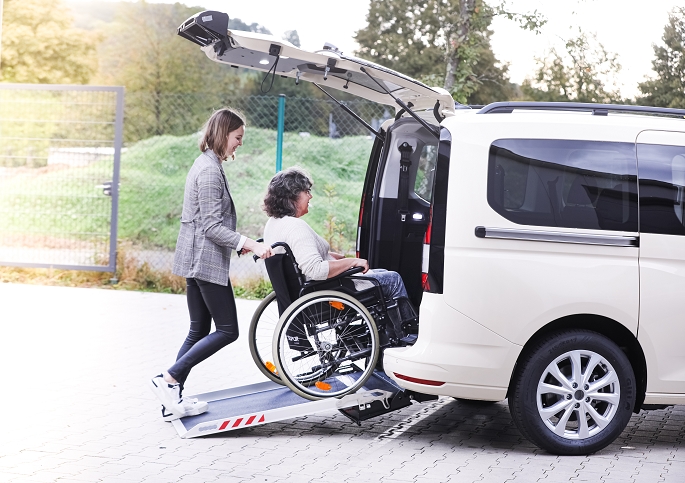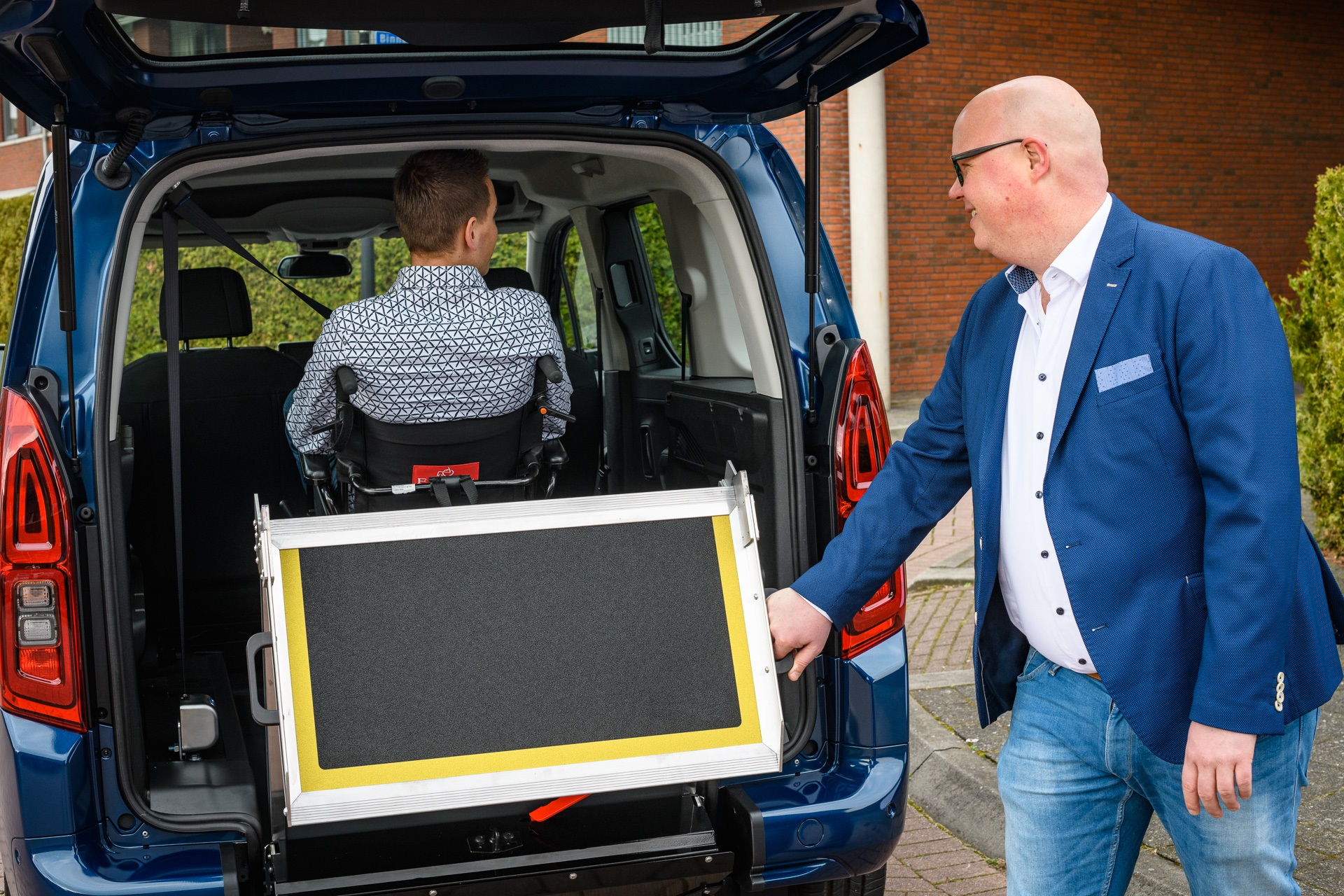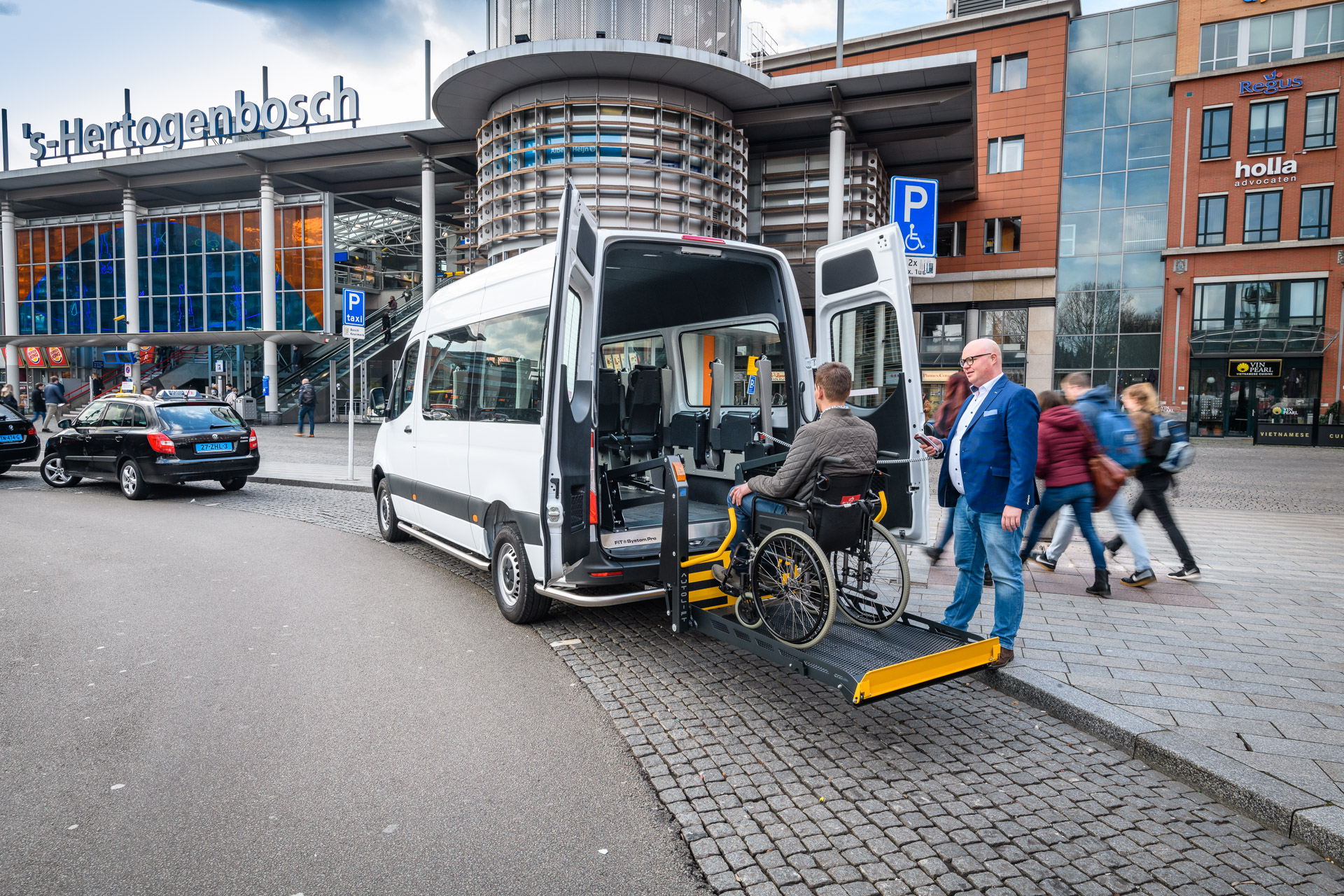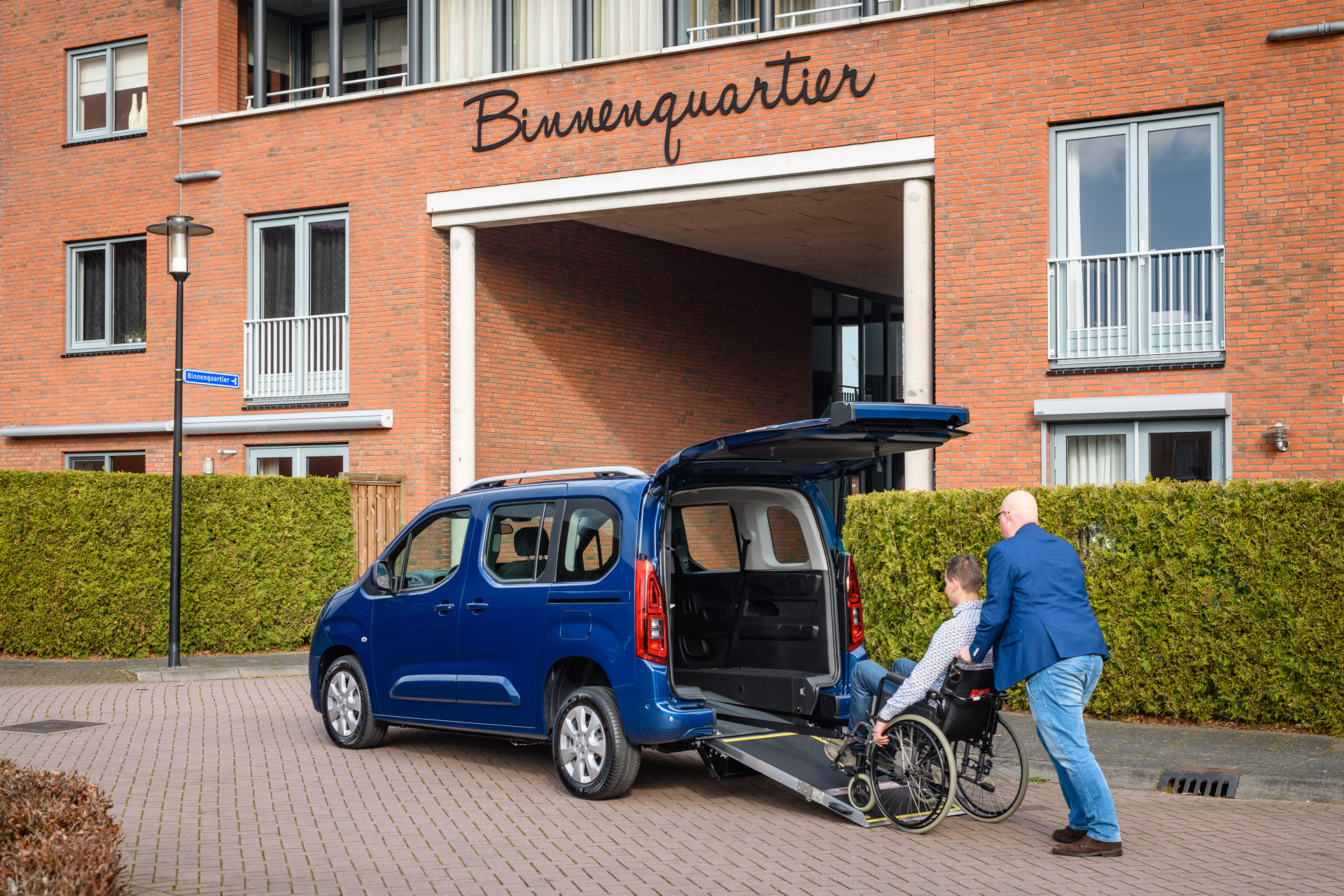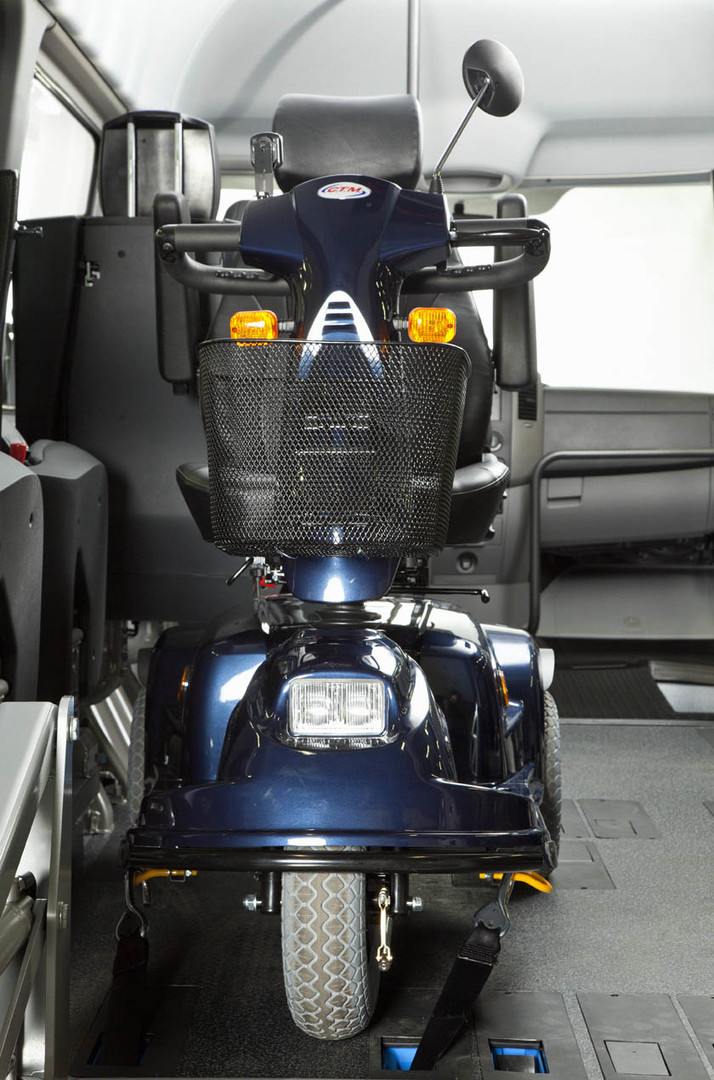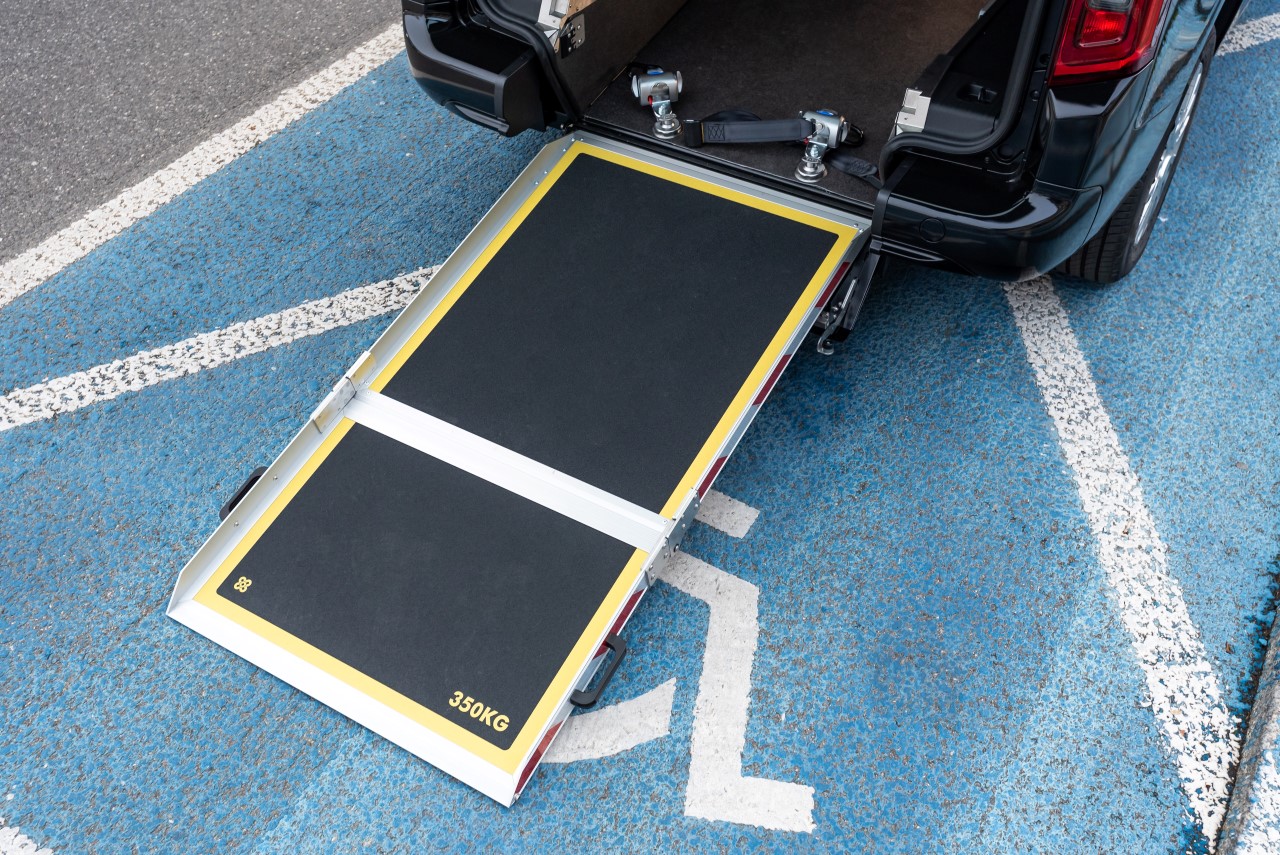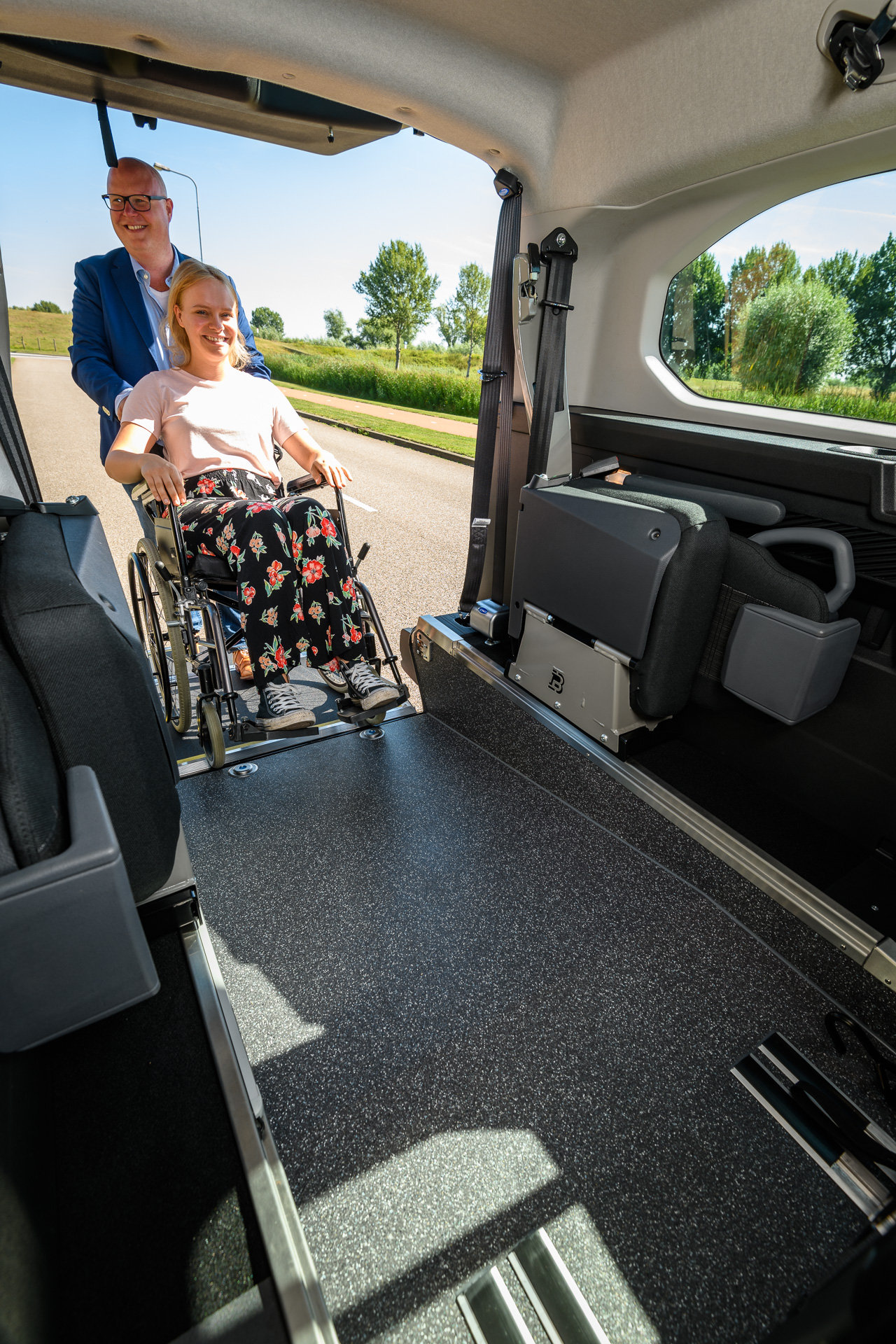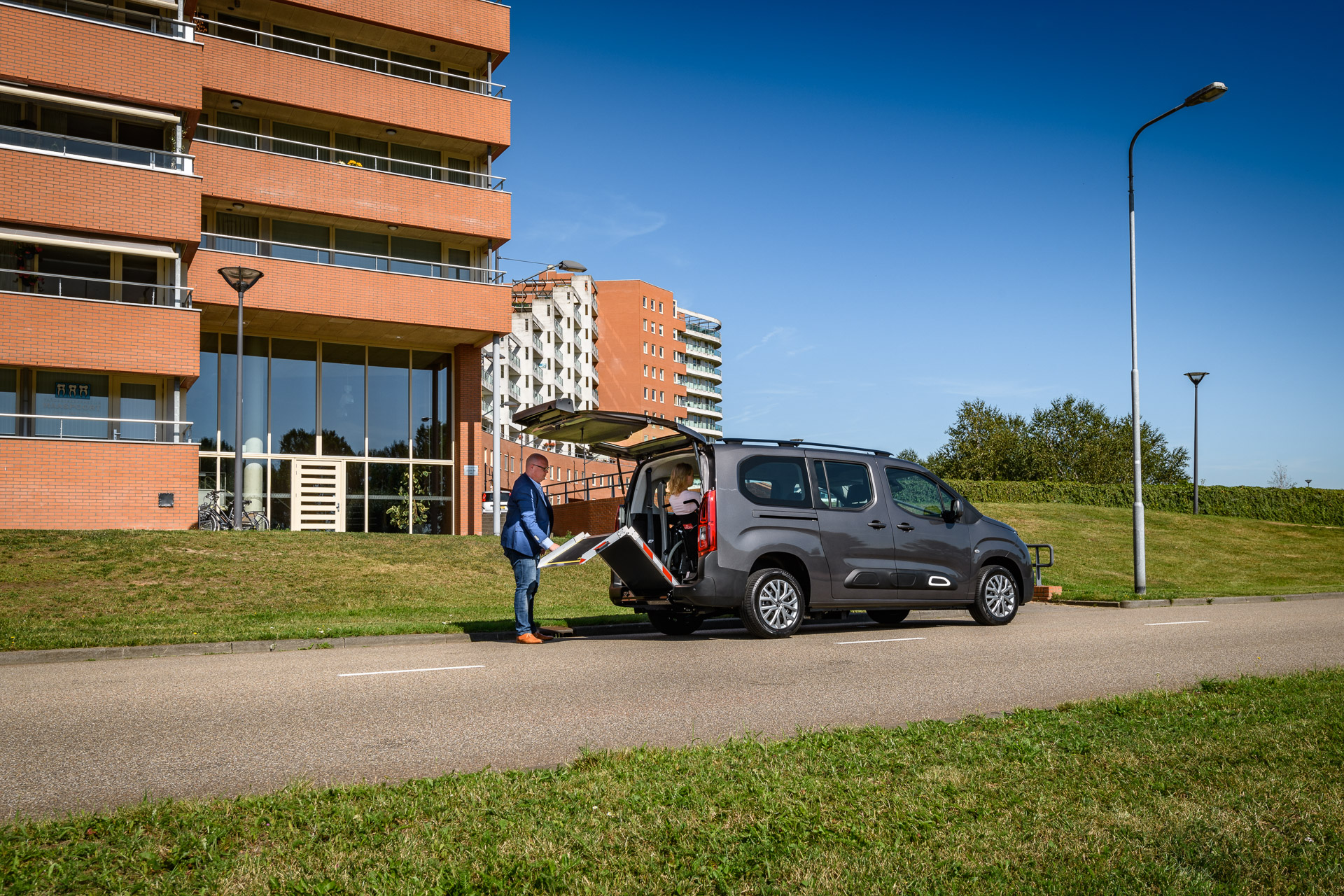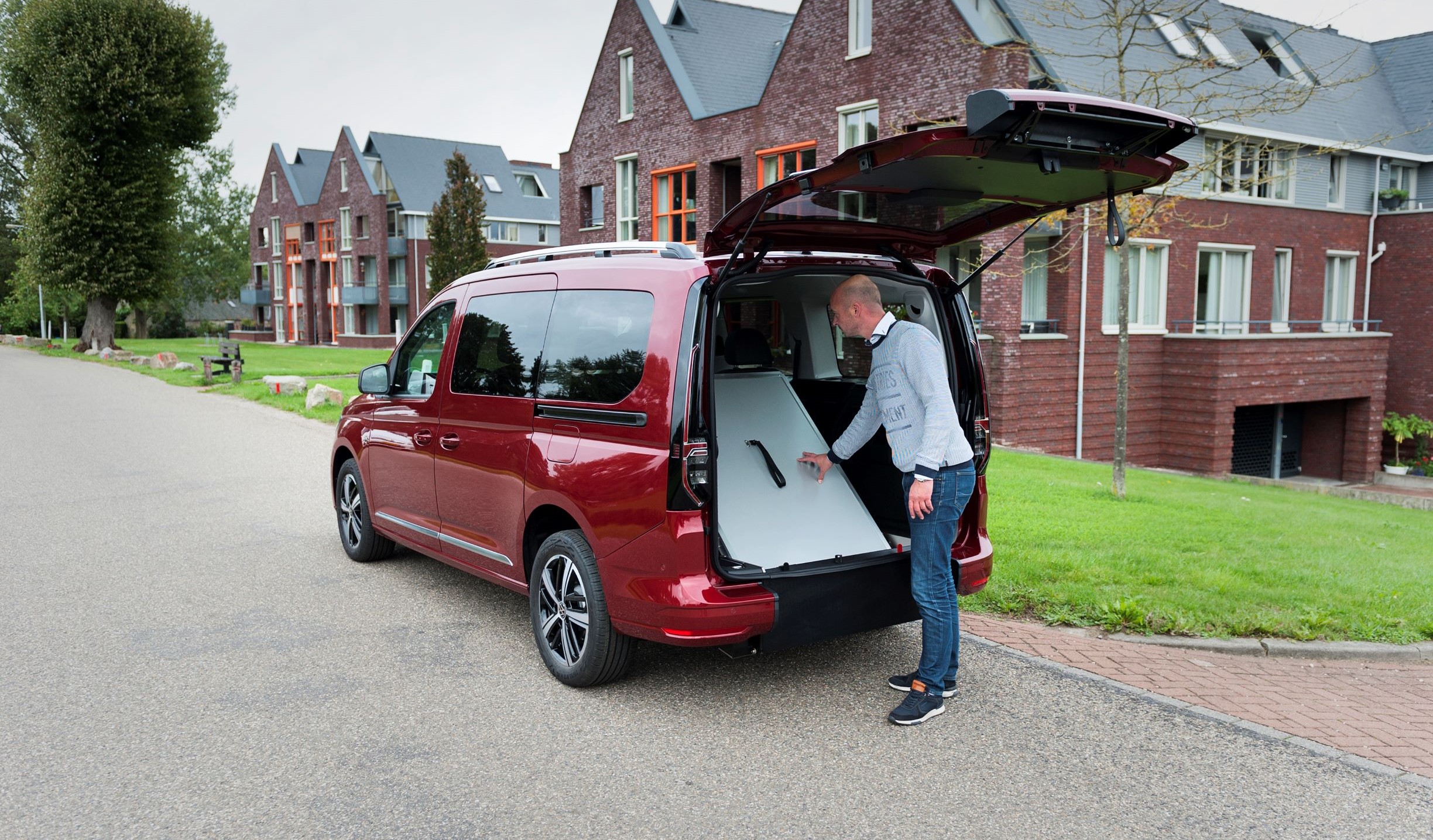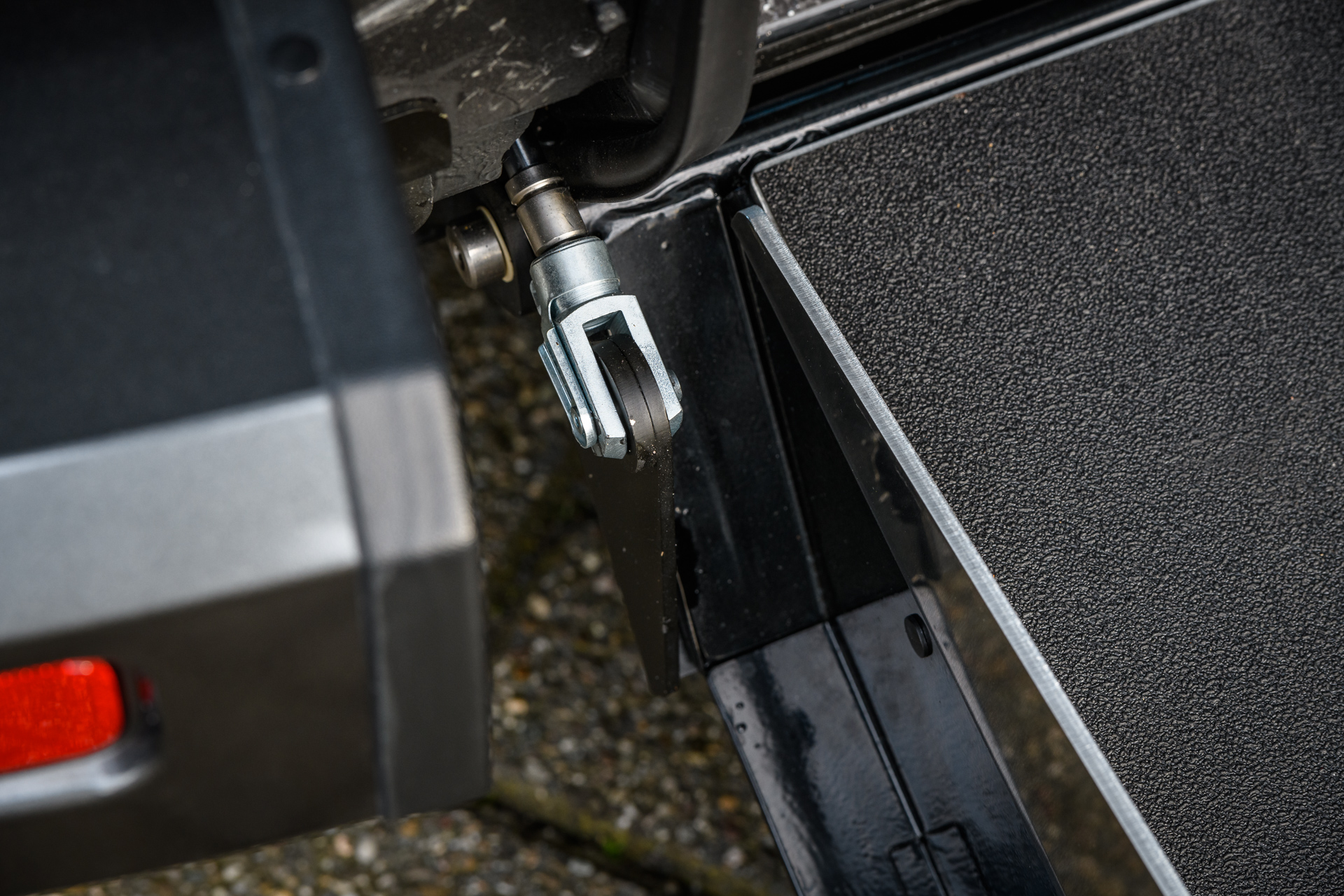Legislation wheelchair ramps
A wheelchair ramp on a vehicle must comply with certain legislation, which may differ per country. For example, the angle of the slope in Spain should be no more than 16.7 degrees and in France no more than 14 degrees. The smaller the angle, the easier it is to drive into a wheelchair passenger. B-Style therefore maintains an angle of 11 degrees for the ramp. Another rule that is mandatory in many countries is an anti-skid mat on the ramp, such as in Sweden, Germany and Spain, among others. In France and England there is additional legislation, where it is expected that there is a yellow marking around the anti-slip mat on the ramp. There must be a raised edge on both sides of the ramp in several countries and the height differs per country, for example 30 mm in the Netherlands and 50 mm in Sweden. This raised edge must be marked in Germany. There are also different rules per country about the weight that the ramp must be able to handle. In France, the ramp must be able to handle a minimum of 300 kilograms of load and in Germany 360 kilograms. Legislation may be subject to change, rules mentioned above may no longer be accurate.


















